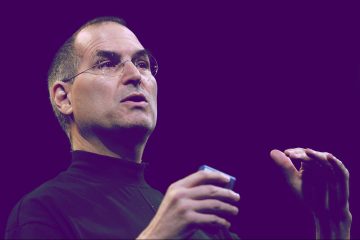
Opinions expressed by Entrepreneur contributors are their own.
Every marketing professional today knows the rules of the game are shifting at the breakneck speed of technological innovation, making it harder to focus on the fundamentals that will maximize success.
Obviously, there’s never one secret sauce that guarantees big wins for marketers this year (or any other). But to my mind, there are four major technological and customer-preference megatrends that promise to build momentum in 2024 and beyond.
I believe embracing these accelerating trends as you adapt your organization’s marketing strategy will help ensure your budgets are smartly allocated and returns on investment are fully optimized.
1. The “Authentic Age”
Today, when marketers are increasingly required to quantify ROI based on complex data —such as cost-per-click and sales conversion rates—focusing on a “soft” concept like authenticity might seem irrelevant.
But thinking so would be a mistake, in my opinion.
Consider this: Merriam-Webster’s Word of the Year for 2023 was “authentic.” Explaining why, Peter Sokolowski, Merriam-Webster editor at large, said in an interview with the Associated Press, “We see in 2023 a kind of crisis of authenticity. We realize that when we question authenticity, we value it even more.”
Customer preference for authenticity has only accelerated now. In an information universe of inaccuracies, uncertain sources, and deep fakes, people crave authenticity more than just a year ago.
Related: 9 Key Tips for Navigating the Upcoming 2024 Marketing Landscape
2. Influencer marketing
With so much content and misinformation floating around, customers are more likely than ever to be influenced and persuaded by a real person than a brand. Influencer marketing has emerged as an essential component of the marketing mix.
The desire for authenticity among customers explains the growth of influencer marketing and creator economy, which is expected to be worth $24 billion by the end of this year.
While budgets today receive more scrutiny than ever, 67% of marketers surveyed by CreatorIQ reported increasing their investment in influencer marketing from 2022 to 2023. Among the brands that increased their spending in this direction, only 24% were working with a net new budget.
According to the survey, among brands that increased their influencer marketing spend, 76% diverted the funds from other marketing activities. In other words, the majority funded their influencer marketing by redirecting resources from other marketing functions—the most common source of which was paid advertising.
And no wonder the power of influencer marketing content, which is more organic, offers a greater possibility of going viral and gaining earned (not paid) media attention among highly relevant target audiences.
Related: 4 Tips to Avoid Influencer Marketing Catastrophes
3. Creator-driven B2B newsletters
Niche newsletters focusing on specialized areas such as AI, health tech, and finance have become pivotal sources for industry insights. Progressing into 2024, the growing interest in newsletters highlights a collective appetite for content curated by influencers and professionally enriching content.
The B2B realm is rich with newsletters designed for an audience that values quality and specialized knowledge. These independent voices offer a refreshing alternative to the conventional narratives found in most major trade publications. They provide insights that feel like exchanging insider information within a community of peers, enriching the professional discourse with diverse perspectives and expert knowledge.
Creator-led newsletters, exemplified by Morning Brew or my own company’s Presspool Insights, which covers AI marketing tech innovations and best practices, are revolutionizing information consumption habits and attracting a quality audience not seen in traditional ad platforms. The main reason is that the audiences are manually opted-in, engaged, and educated or highly interested in the topic they’ve subscribed to.
Platforms like LinkedIn have emerged as prime venues for B2B content creators, each providing unique advantages. Substack and other new platforms have simplified the newsletter creation process with ‘no-code’ solutions, empowering creators with ownership over first-party subscriber data — a major benefit as Google begins eliminating third-party cookie tracking data this quarter. I expect this trend to increase rapidly going into 2025 as the barrier of entry gets smaller and smaller.
4. AI-enabled, ROI-optimized campaigns
Coming full circle, leveraging the power of influencer marketing strategies through today’s creator-led newsletter distribution platforms enables the same type of KPI tracking associated with paid search ads like Google and Facebook for the last two decades.
At my software platform, Presspool.ai, for example, we track everything from impressions to total clicks, unique clicks and conversions. Everything is tracked and monitored in real-time to ensure full transparency into the data analytics while providing our customer with AI-enabled feedback on how to better optimize messaging for higher and higher ROI in their future newsletter campaigns. This falls right in line with ROI optimization, which I believe will become more and more essential in today’s competitive marketing landscape.
The bottom line is that traditional advertising and PR have grown over-saturated and, to be blunt, annoying to buyers. People don’t trust ads from brands or large corporations as much as they once did. Instead, they trust individuals who have a high level of authenticity and specific knowledge. Referrals from these influencers combined with the best technology for tracking and ROI optimization are the most potent form of customer acquisition, and it’s now possible to access platforms that do it all in real-time, at scale.





